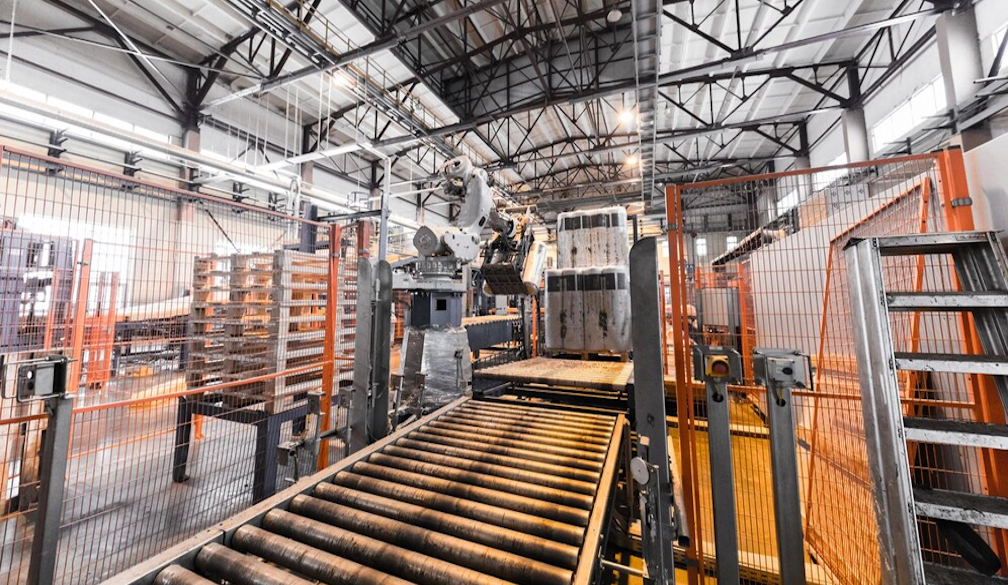12 Tips for Optimising Your Workflow with Gravity Roller Conveyors

In the fast-paced world of manufacturing and logistics, efficiency is key. An organised and streamlined workflow is crucial in achieving optimal productivity. Gravity roller conveyors can be a game-changer if you want to improve your workflow processes. This guest post will explore twelve practical tips for optimising your workflow using gravity roller conveyors. So, let's dive in!
1. Assess Your Layout and Needs
Before implementing gravity roller conveyors, take the time to assess your workspace layout and unique requirements. Consider factors like space constraints, product dimensions, and material flow patterns. Measure the distances between workstations and visualise how gravity conveyors can enhance movement and ease of operation within your facility.
2. Plan for Flexibility
Plan for potential growth or changes in your production line by incorporating flexible conveyor configurations. Opt for modular systems that allow easy adjustments or expansions as needed. This adaptability ensures you are ready to meet future demands without costly modifications or disruptions.
3. Invest in Quality Gravity Roller Conveyors
Investing in high-quality gravity roller conveyors ensures durability, smooth operation, and longevity of use. Look for well-engineered designs that offer low-friction rotation with sealed bearings to minimise maintenance requirements.
4. Simple Integration of Existing Equipment
Choose gravity roller conveyors that are compatible with common industry specifications to ensure seamless integration of existing equipment into your conveyor system. This simplifies the installation process while minimising downtime during the transition phase.
5. Configure Reliable Curves
When designing conveyor layouts involving curves or bends, prioritise quality corner units specifically designed for smooth transitions between sections without product damage or jams. These tailored components keep items on track during cornering, maintaining a steady flow throughout the system.
6. Prioritise Ergonomics
When designing conveyor workstations, factor in ergonomic principles to consider the well-being of your team. Adjustable heights, proper lighting, and cleared paths are essential for creating a comfortable and safe working environment. Prioritise employee satisfaction to reduce the risk of accidents or injuries.
7. Implement Sorting Mechanisms
To keep workflow efficient, utilise sorting mechanisms along your gravity roller conveyor system. Implementing chutes, diverts, or diverters can process items based on predetermined criteria, enabling simultaneous processing of different products or routes within your facility.
8. Well-placed Transfer Points
Ensure strategic placement of transfer points in your material flow to maximise efficiency. Incorporate transfers where there are changes in slope, direction, or diverging paths of products to prevent unnecessary handling and minimise congestion.
9. Regular Maintenance Checks and Cleaning
Routine inspection and maintenance of your gravity roller conveyors are crucial for optimal performance. Establish a preventive maintenance schedule with regular checks for loose fittings or worn-out components. Keep the conveyor system clean from debris accumulation to avoid interference with smooth product flow.
10. Employee Training and Awareness
A well-trained team is important for an efficient workflow with gravity roller conveyors. Provide thorough training sessions on safety measures, operational protocols, and troubleshooting tips specific to the equipment installed in your facility. Regularly communicate important updates or procedural changes to ensure everyone is on the same page.
11. Utilize Gravity Feed Racks
Gravity feed racks integrate seamlessly with gravity roller conveyors by providing an organised storage solution that promotes a first-in-first-out (FIFO) workflow system for inventory management operations. This setup reduces picking errors while enhancing overall efficiency and accuracy in fulfilment tasks.
12. Monitor Performance Metrics
Monitor key performance metrics such as throughput rates, cycle times, downtime logs, error counts, and accumulation points regularly throughout your operation cycles using integrated reporting software or manual tracking methods where applicable. Doing so lets you immediately identify bottlenecks and tackle inefficiencies before they become major setbacks in your production processes.
Conclusion
Integrating gravity roller conveyors into your workflow can significantly optimise productivity in various industries. By strategically implementing these twelve tips, you can achieve efficient material flow, reduce handling costs, minimise errors, and improve overall satisfaction for employees and customers. Keep exploring new avenues for improvement as technology evolves to embrace continuous optimisation.






